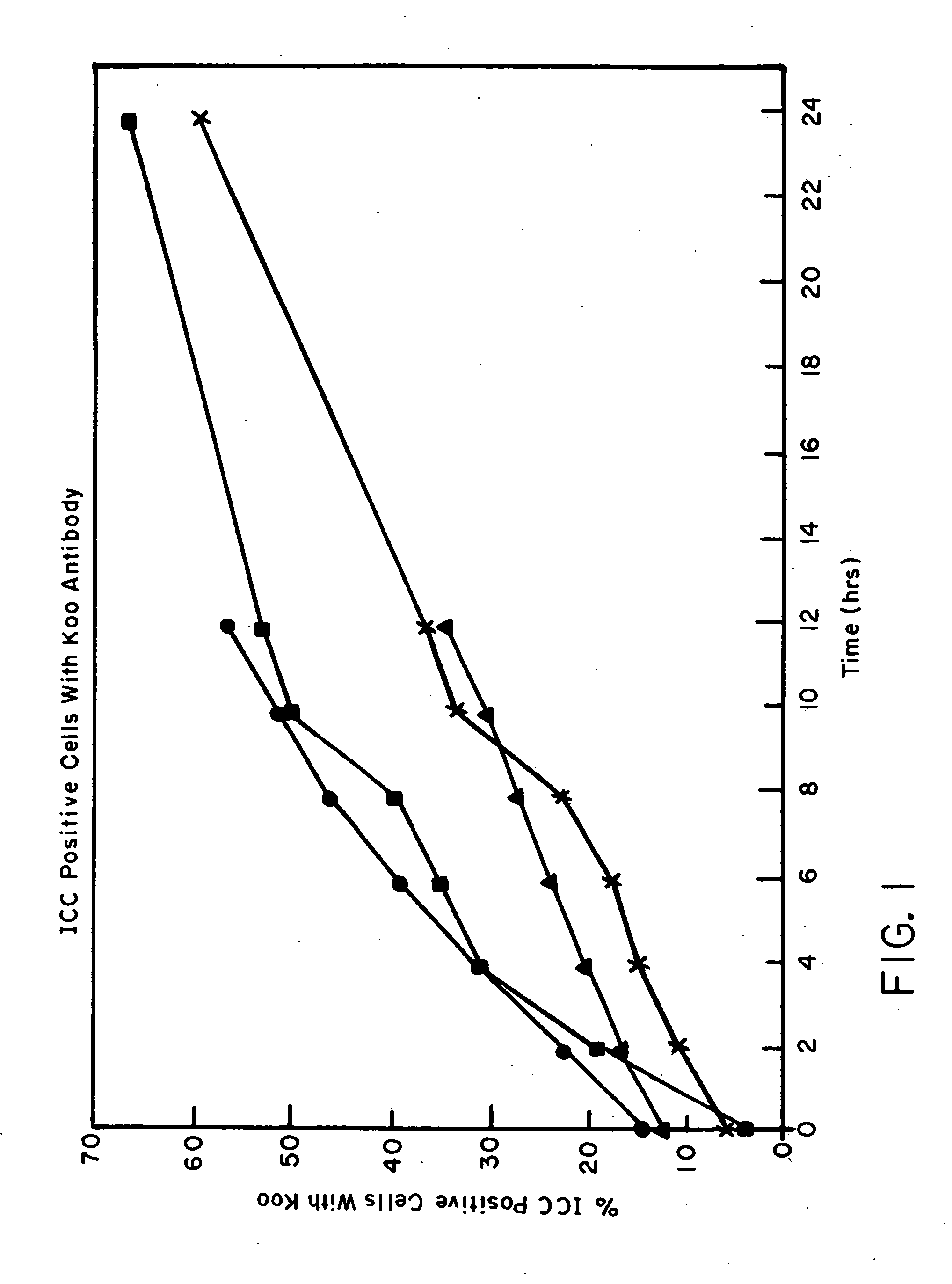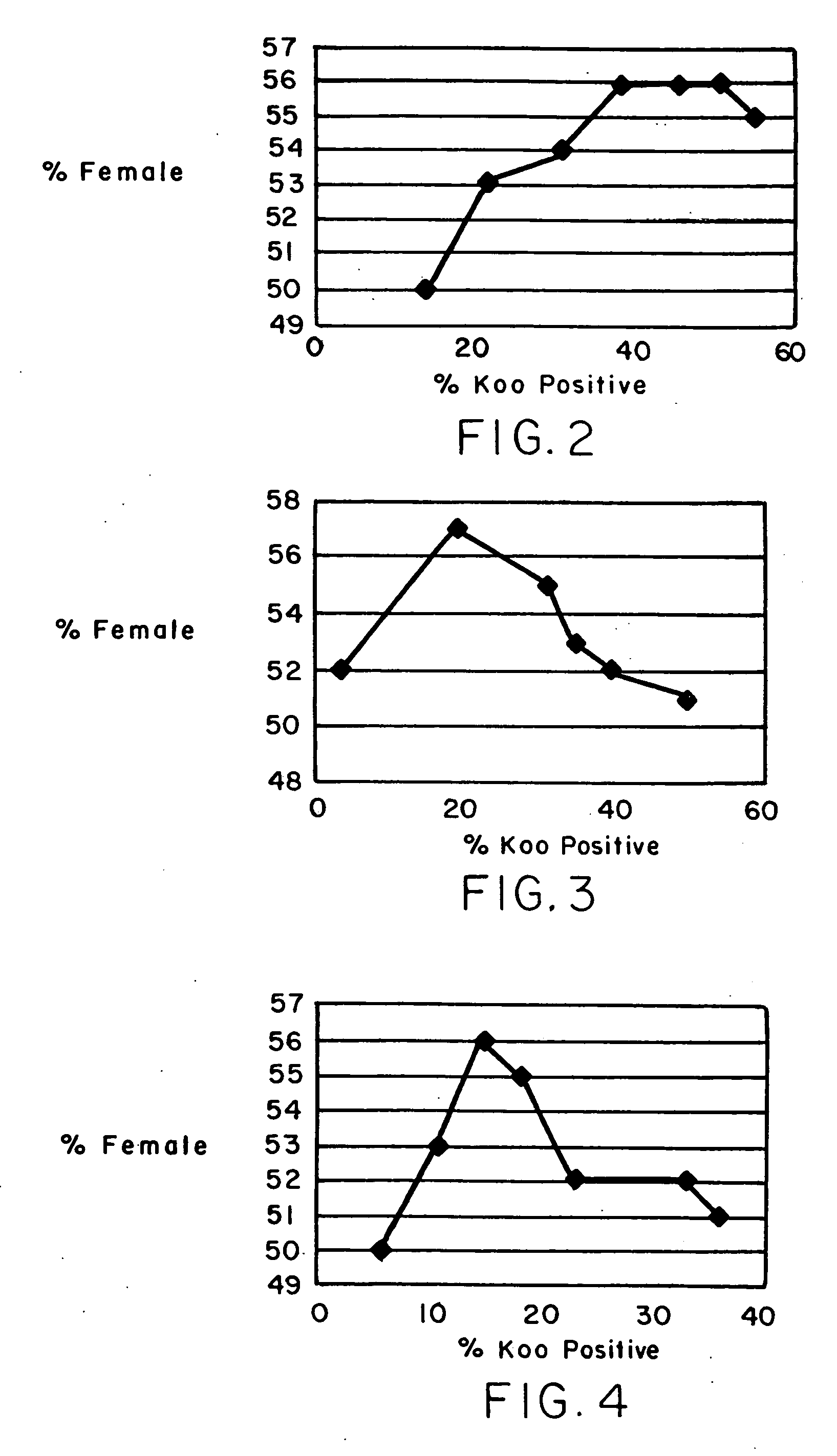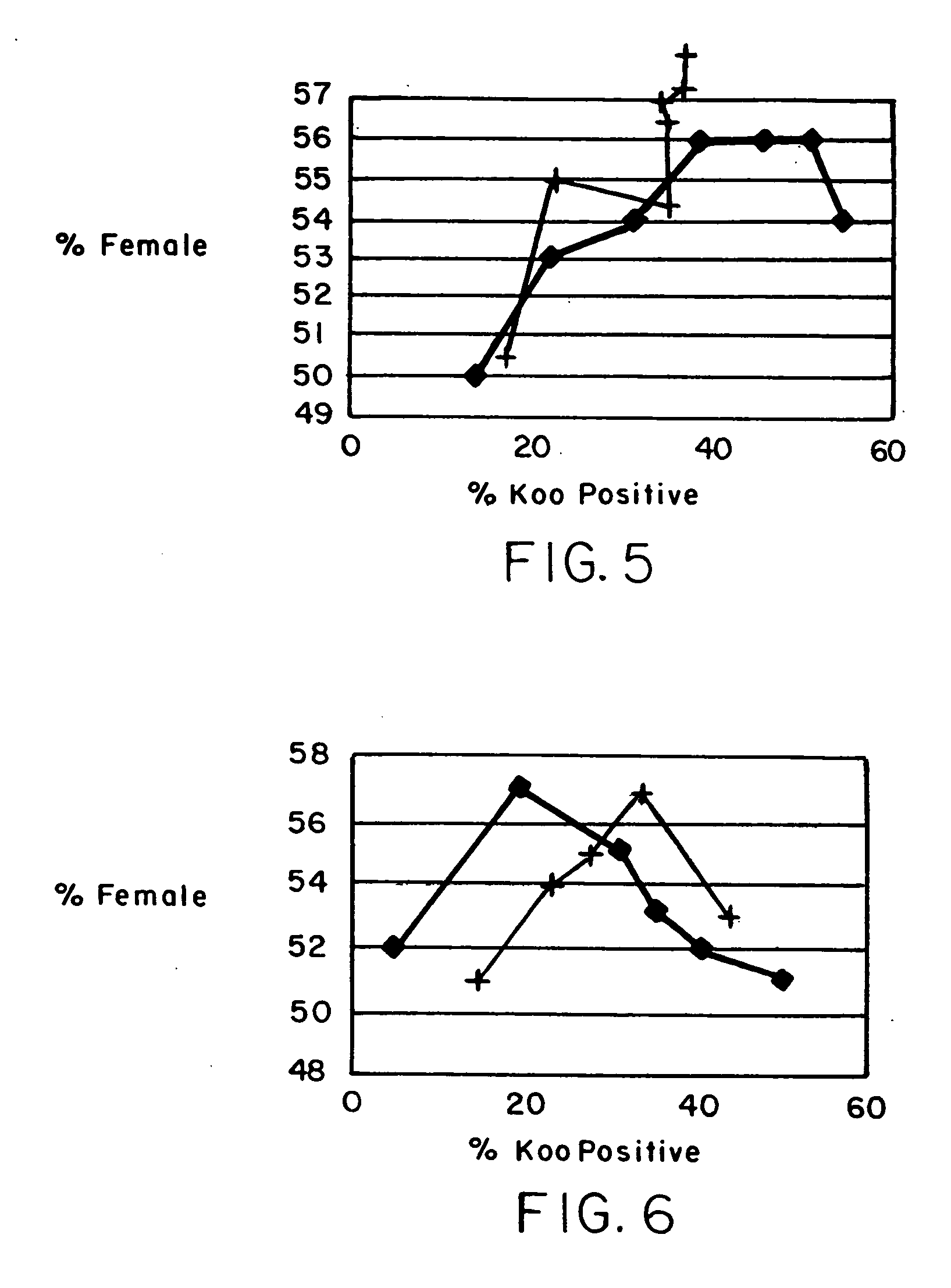Method for sex biasing spermatozoa
a sperm bias and sex bias technology, applied in the field of sex biasing sperm bias, can solve the problems of reducing the success rate of sex bias, reduce the motility of sperm, etc., and achieve the effect of increasing the potential for conceiving an offspring and increasing the relative ability of at least a portion
- Summary
- Abstract
- Description
- Claims
- Application Information
AI Technical Summary
Benefits of technology
Problems solved by technology
Method used
Image
Examples
example 1
ICC Separation Time Courses with Bull Semen
[0160] Four time studies (Samples 1-4) were conducted as described below.
[0161] Sample 1 was cooled to Room Temperature, i.e., actually 28° C., on the bench. Samples 2-4 were cooled to 4° C., 12° C. and 16° C., respectively, using a circulating water bath.
[0162] 1.0 ml separations using S-Beads (VICAM, Watertown, Mass.) were performed at t=0, 2, 4, 6, 8, 12 and 24 hours. Samples of the washed cells at each time point were labeled with Koo Ab for immediate ICC analysis. Frozen control and final sexed samples were kept for FISH analysis. For each temperature point an ejaculate was collected into a 15 ml conical centrifuge tube. The tube was immediately transferred to a 250 ml beaker containing 200 ml of water at 32° C. This beaker was immediately placed into a water bath at the desired temperature and allowed to cool and sampled over a 24 hour period and separation was performed as described in Procedure 5, above. A 1.0 ml sample was taken...
example 2
Reproducibility of Sexing Window
[0172] 10 ejaculates were processed by the Semen Sexing protocol (Protocol 5), as described above (each ejaculate was split into 1.0 ml aliquots and the sexed samples from a given temperature were pooled after the magnetic separation step). Following completion of the separation process each ejaculate was extended in egg yolk citrate extender and frozen using industry standard methods. FISH analysis was performed to determine the female bias achieved in each sample. Table 5 shows data from quality assessment of the frozen semen samples. Semen which had been stored under liquid nitrogen for 4 days was thawed in a warm water bath and semen quality evaluated immediately for % motility and for forward motility (forward motility is described as 1=poor to 5=excellent). Semen, then, was incubated on a warming table for 4 hours and re-evaluated. Control samples were removed, extended and frozen at this point after the samples were incubated for 6 hours at 12...
example 3
Comparison of Sexing Between S-Bead and Antibody Chase Capture Methods
[0173] Following 6 Hour, 12° C. Incubation
[0174] A single ejaculate was collected from a bull using an artificial vagina and the sample was immediately cooled to 12° C. (as described in Procedure 5) and kept at this temperature for 6 hours. Following the 6 hour, 12° C. incubation the raw ejaculate was split into three fractions and treated as follows.
[0175] Fraction 1 was immediately extended and frozen without further processing as control.
[0176] Fraction 2 was sexed using the Koo antibody in a chase capture method as described in Procedure 6, above.
[0177] Fraction 3 was sexed using the S-Bead method as described in Procedure 5, above.
[0178] The results of FISH analysis of the control and sexed fractions are given in Table 6. The control fraction shows the expected 50% female to male ratio while both the Koo antibody selected and S-Bead selected population exhibit an enhanced female cell bias of 56.2% in a ...
PUM
| Property | Measurement | Unit |
|---|---|---|
| Temperature | aaaaa | aaaaa |
| Temperature | aaaaa | aaaaa |
| Fraction | aaaaa | aaaaa |
Abstract
Description
Claims
Application Information
 Login to View More
Login to View More - R&D
- Intellectual Property
- Life Sciences
- Materials
- Tech Scout
- Unparalleled Data Quality
- Higher Quality Content
- 60% Fewer Hallucinations
Browse by: Latest US Patents, China's latest patents, Technical Efficacy Thesaurus, Application Domain, Technology Topic, Popular Technical Reports.
© 2025 PatSnap. All rights reserved.Legal|Privacy policy|Modern Slavery Act Transparency Statement|Sitemap|About US| Contact US: help@patsnap.com



